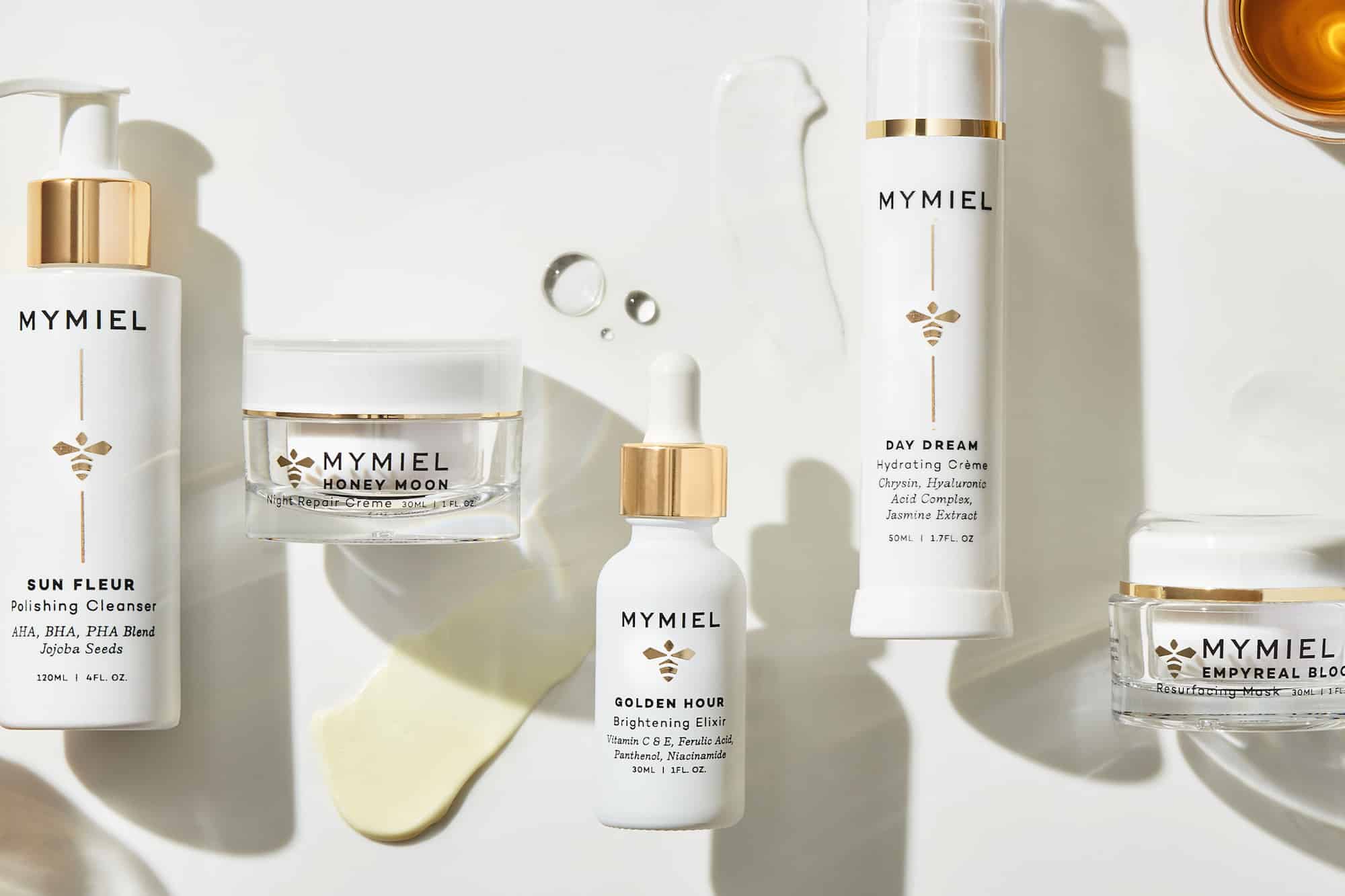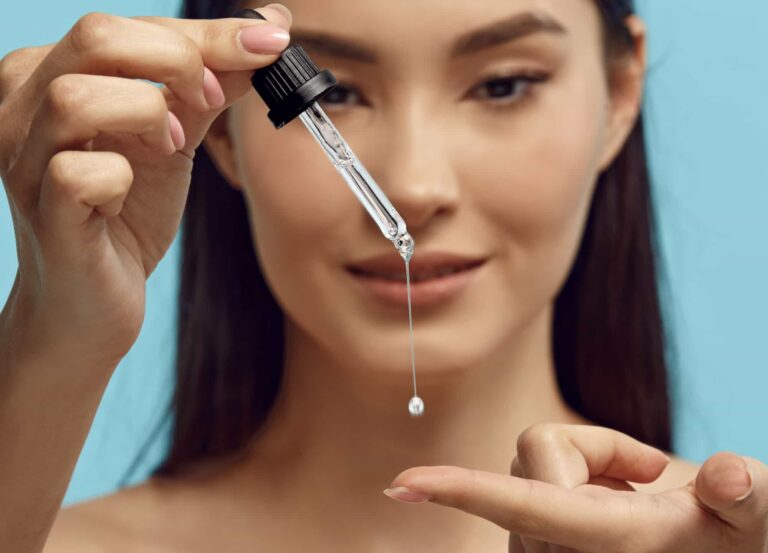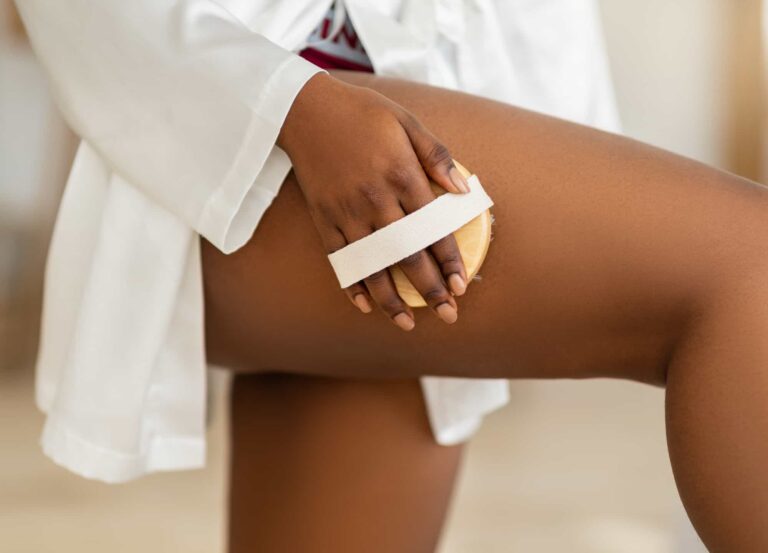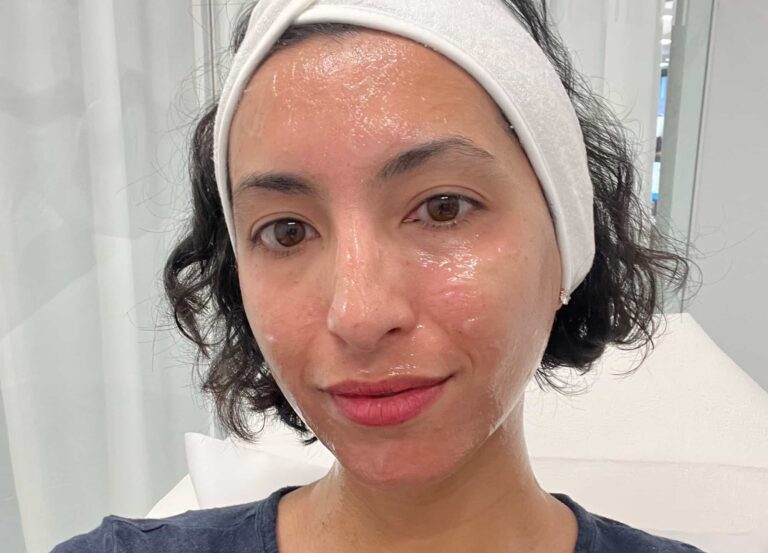It has catapulted careers and conjured waitlists thousands long—such is the sway of the Instagram shout-out. While some diligently stalk celebrity accounts for the next cult favorite or household name, I prefer to follow top dermatologists and plastic surgeons, finding their stamps of approval to be especially earnest and organic. This is, in fact, how I happened upon my current skin-care obsession, Mymiel, in the feed of Dr. Mathew Avram, a board-certified dermatologist and associate professor of dermatology at Harvard Medical School.
Recently, while Sunday-brunching at a cafe on Newbury Street in Boston, Dr. Avram snapped a pic of himself alongside dermatology residents Dr. Christina Weng and Dr. Tyler Menge and posted it with a caption commending the duo on their new skin-care launch.
Prior to landing at Harvard, North Carolina native Dr. Weng dedicated her time to researching pigment biology in a skin cancer lab at the California Institute of Technology. Dr. Menge—who grew up on a cattle ranch in Colorado—spent years working in a stem cell and vascular biology lab at the University of Michigan Medical School. The two eventually met in the Harvard Dermatology Residency Program and bonded over their shared love of skin health and aesthetics.
“Our unique business, research, and clinical backgrounds allowed us to identify a gap in today’s beauty market,” says Dr. Weng. “Every day, we sit face-to-face with patients [who are] frustrated by their home beauty regimen. We ultimately created Mymiel because we wanted to bring our line of evidence-based formulas out of dermatology offices and into the homes of our customers as a comprehensive, easy-to-use regimen.”
The proverbial glue binding their clean-skin-care collection is honey—or, more specifically, the sweet stuff’s most skin-transforming components. The smart edit that is Mymiel includes five products, each richly textured, poetically named, and thoughtfully packaged: a creamy cleanser that exfoliates with lactic and salicylic acids and jojoba seeds (Sun Fleur); an antioxidant serum, leveraging vitamins C and E plus ferulic acid (Golden Hour); a brightening day cream, with hyaluronic acid and honey-derived chrysin (Day Dream); a tone- and texture-correcting night cream, powered by kojic acid and retinol (Honey Moon); and an overnight mask, with resurfacing glycolic, lactic, and pyruvic acids (Empyreal Bloom).
If the formulas sound high-octane, it’s because they are. (Would you expect anything less from a couple of derms?) But in each potion, dulcet extracts, oils, butters, and honey (of course) buffer the more stimulating ingredients to offset irritation. On a personal note, I’ve been using the line exclusively for the past few weeks, and my extremely touchy skin—which gets visibly fired up by most retinoids and even classic antioxidant serums—has yet to protest a single product (save for some transient tingling when I first applied the PM acid mask; I expected to awake flushed, but my skin kept its cool overnight and was glowy come dawn).
I could go on about these products—their dreamy textures, their expensive but utterly unperfume-y scents, the special touches on each jar or bottle—but believe it or not, I don’t like to gush. Instead, I’ll let the brand’s creators share a bit more about their process and philosophy.
Q: Tell me about the name Mymiel. How did you come up with it?
A: Miel is the Spanish word for honey, which is the root of our products’ most coveted ingredients. Honey has traditionally been used in skin care in its raw form, but when we were conceptualizing our regimen, we knew that distilling honey to its most potent dermatologic ingredients would be central to our line. We wanted the brand name to speak [not only] to our star ingredients but also to our company’s mission and core values. And so our new word, Mymiel—a play on “my honey”—was born.
Q: What specific components of honey are you using, and why?
A: Honey has a rich history in skin care. It’s known for its antioxidant and anti-inflammatory properties—and today, as a single ingredient, you can find it everywhere from drugstore lip balms to high-end skin care [lines] to hospital burn units. We designed our products to reimagine honey and how natural ingredients are thought about in skin care. We don’t just add a dollop and call it a day. Rather, our secret sauce is our Mel Honey Actives, which we’ve curated by identifying the components of honey that are most potent and proven in improving skin health.
Beyond the usual honey extract and beeswax for hydration, we use glycolic and lactic acids, to dissolve impurities and stimulate collagen production, and pyruvic acid, to fade dark spots and smooth skin. Kojic acid brightens and evens skin tone. Chrysin is a powerful antioxidant that illuminates skin. Vitamin C protects against free radicals and brightens dark spots; ferulic acid is another antioxidant that stabilizes vitamin C. Panthenol is an anti-inflammatory vitamin, which calms and decongests. These are all clinically proven ingredients naturally found in honey.
Related: 17 Under-the-Radar Skin-Care Brands Developed by Leading Derms, Chemists, and Plastic Surgeons
Q: The line, as a whole, has a carefully curated feel. Why launch with these five products, in particular?
A: We wanted to deliver a core regimen of what we consider essentials for all skin types. It had to make sense from a clinical perspective, with effective ingredients, like those we use in clinic, but also be safe and gentle enough for everyday home use. As beauty routines have become increasingly complex, we wanted to distill things back down to the steps we thought were most important—while still letting users expand on those, as they wish, with offerings from other companies. Each product in our line is great on its own, but when used together, the formulas work synergistically to even texture and tone, hydrate, and cultivate a lifelong, healthy glow.
Q: Clean has become a somewhat controversial term in beauty. What does it mean to you, as Harvard dermatologists?
A: Clean means something a little different to everyone. If you look online, there are so many different ingredients to be avoided for a product to be considered “clean.” If you look across those lists, you’ll see that they all share a core of ingredients. Ultimately, what we avoid using in our products is that core list of ingredients that have a strong evidence base for being irritants, allergens, or harmful to skin health in some other way. But this is an evolving concept—and we have to remain dynamic in how we craft our products. At the end of the day, we set out to create products that we feel good about using on ourselves and our families and to help customers and patients make those same informed decisions by providing complete transparency.
By delivering clean luxury skin care that is evidence-backed, we’re also aiming to debunk the myth that by choosing clean beauty products, you’re compromising on efficacy. We’re starting by changing the way people think about honey and other natural ingredients—[by introducing] the idea that you can take something raw in nature and break it down to its most potent components and concentrate that into something incredibly powerful. Clean beauty shouldn’t be a compromise between your core values and proven results.
Q: One thing that strikes me as especially luxe about the line is the delicate range of scents you’ve incorporated. What kind of olfactory experience were you going for?
A: This is something we’re actually very proud of. Our products do not contain any artificial fragrances. [Christina is] a huge perfume geek, and if [she weren’t] in dermatology and skin care, would be a perfumist. And so part of building our line from the ground up had to involve creating custom scents. They’re meant to be evocative—from the white flowers in Day Dream to the ethereal rose in Honey Moon to the gourmand bouquet of Empyreal Bloom.
Q: What’s next for Mymiel? Might there be a sunscreen in the works?
A: We get this a lot: “You’re dermatologists! How could there not be sunscreen?” We absolutely love sunscreen! Through our experiences, however, we’ve learned that sunscreen is such a personal thing. From the SPF value to chemical versus physical blocking agents to cream versus gel or even sprays, there’s a lot to unbox in the world of sunscreen. Our patients always ask us which is best, and we uniformly say, “The one you’ll wear!” So as we designed our core lineup for launch, we wanted to focus on products that would work with the sunscreen you already wear and love.
We designed our day cream to be a perfectly hydrating base layer over which you can apply your favorite sunscreen. A common problem for many people is how their sunscreen or foundation pills when layered on top of skin-care products, but Day Dream and our other products are formulated without ingredients that can react and cause textural changes. They’re made to work together and with the rest of your regimen.
In terms of products coming down the pipeline, we certainly would love to make a sunscreen eventually for those who haven’t quite found their holy grail SPF. We’re also working on a couple of other products to supplement our core lineup, including an eye cream and makeup remover, which several customers have asked about. These are still early in the development stages. We want every detail of every Mymiel product to be something we’re proud to stand behind—and we’re happy to spend as long as it takes to perfect each product.











